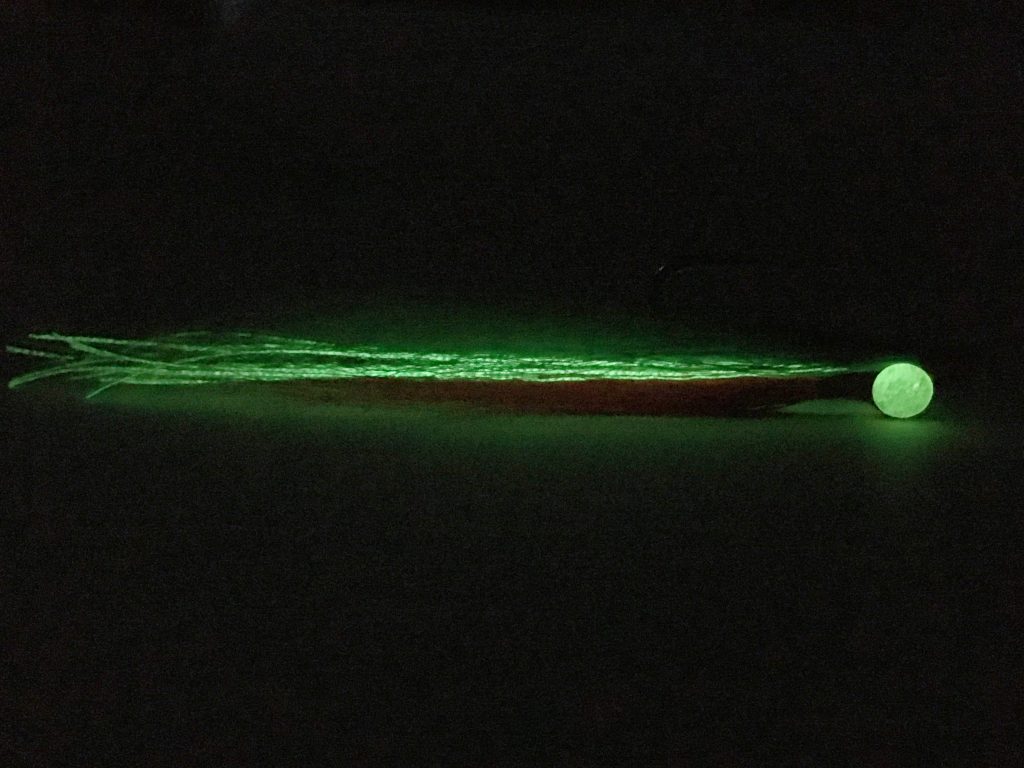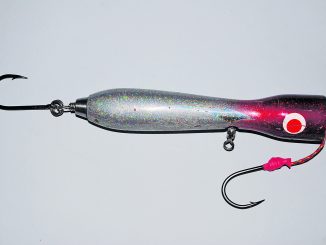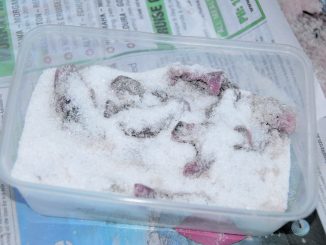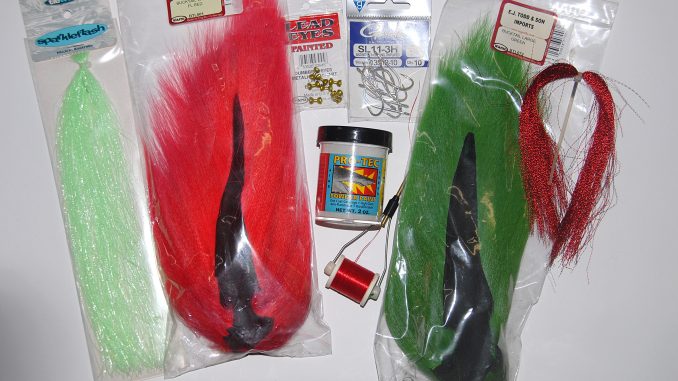
by Gordon Macdonald •
Ask any angler who has chased snapper, mulloway, flathead and numerous other species on soft plastics and chances are they have regularly used the nuclear chicken colour in either a jerk shad, curl-tail or paddle-tail style.
The first time I became aware of this colour was while perusing some Gulp soft plastics, which were new to the market at the time. I wasn’t overly impressed with it at first but after hearing reports of its success I just had to try it myself. Yes, it worked! Actually, it worked exceptionally well and would regularly get more bites than any other colour, especially in deep or dirty water. Recently I decided to try and copy this colour in a fly and after a bit of experimenting I am rather happy with the result.
The Nuked Chook Clouser has the same colours and glow-in-the-dark attributes as the nuclear chicken soft plastic does. It swims similar to a jerk shad plastic and it gets bites. Obviously, this colour can be tied with an array of different materials, however I have chosen the classic bucktail for this particular one. Sometimes, I will use polar fibre for the belly as it has a little more kick and movement when stripped, however you still need to use bucktail for the winging material as the polar fibre mats with the hook point regularly when tied in this position.
I use a relatively large, weighted eye on this fly as I like to fish it deep for snapper, but will sometimes add even more weight (to get the fly to sink faster and deeper) by putting a 0, 00 or 000 ball sinker on the bottom of the perfection loop that I tie the fly on with. This is perfect for dredging flies at the artificial reefs or in deeper channels such as the Jumpinpin Bar. If you don’t want to go to the effort of making glow-in-the-dark eyes, then you can just add glow pupils to a recessed real-eye or you may be able to source some pre-made glow eyes. I use glow powder paint, as it sets extremely tough, however my daughters assure me you can get glow nail polish, which would be a little easier and still relatively tough. Let’s look at making a nuked chook clouser.
1
Materials required for this pattern include fluoro red bucktail, green bucktail, red krystal flash, green glow-in-the-dark sparkleflash and scarlet red flat-waxed nylon thread. I used the Gamakatsu SL11-3H as it is extremely strong, however any O’Shaughnessy pattern hook will suffice. The colour of the eye is not important, as I will be coating it anyway with glow powder paint.
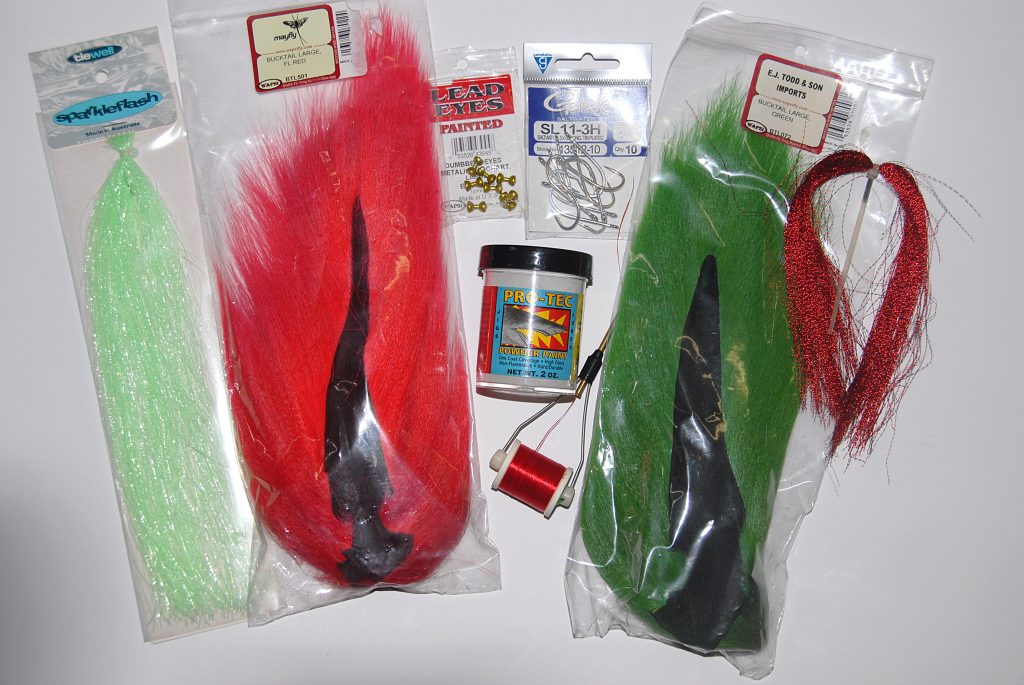
2
To coat the eyes you will need some heat source such as a paint stripper gun and something to hold the eye like fine point pliers or tweezers. Shake the bottle of powder paint before opening it. Heat the eye a bit and dip in and out of the powder paint quickly. Add a little more heat and dip again. Do not hold the eye in the paint or it will just come out with a big glob of powder attached. Dipping and heating it three or four times will be sufficient to get a thick even coat.
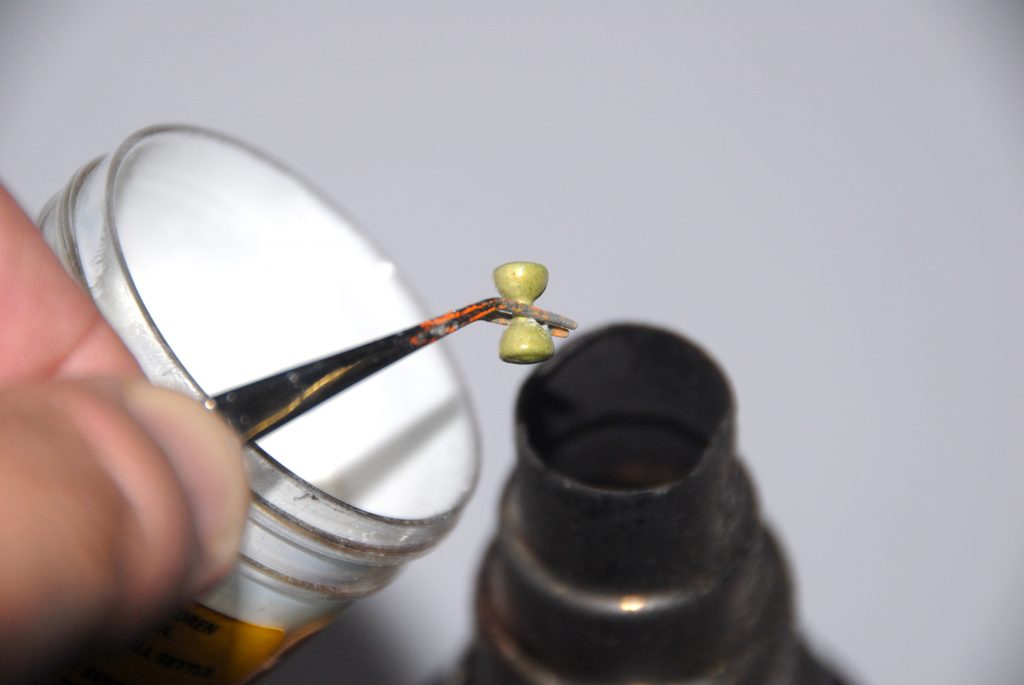
3
Place the hook in the vice and attach the thread just behind the eye. Lay down a bed of thread for about 10mm behind the hook eye. Attach the dumbbell eye about 5mm behind the hook eye using a series of figure-of-eight wraps then whip finish.
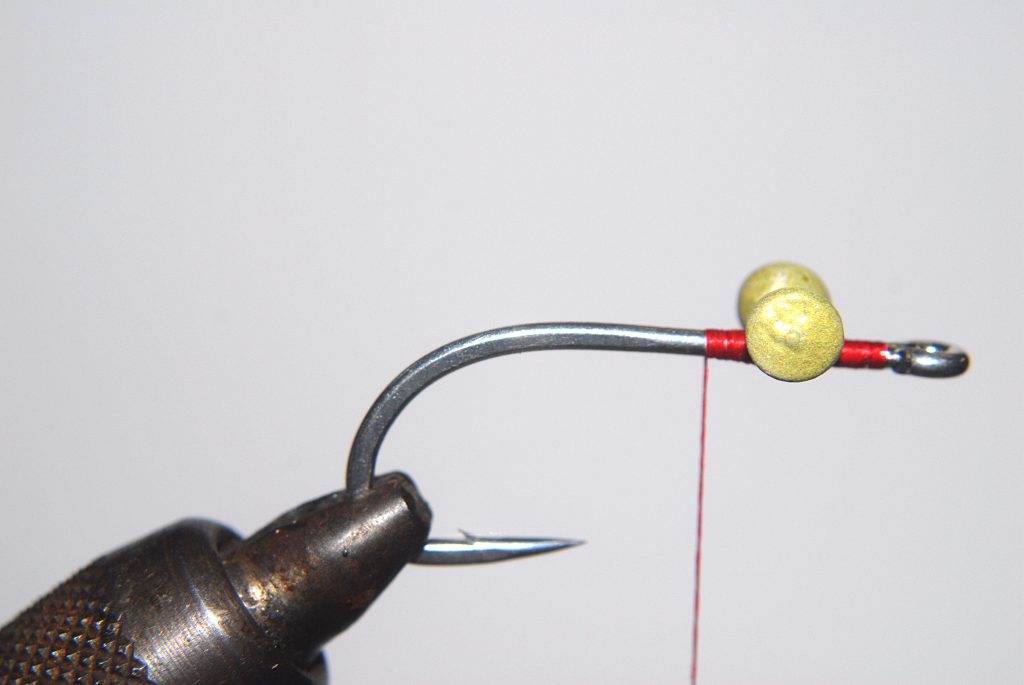
4
Cut six to eight strands of krystal flash which are approximately three times as long as the hook and attach these directly behind the dumbbell eyes. Whip finish and add a little head cement to increase durability.
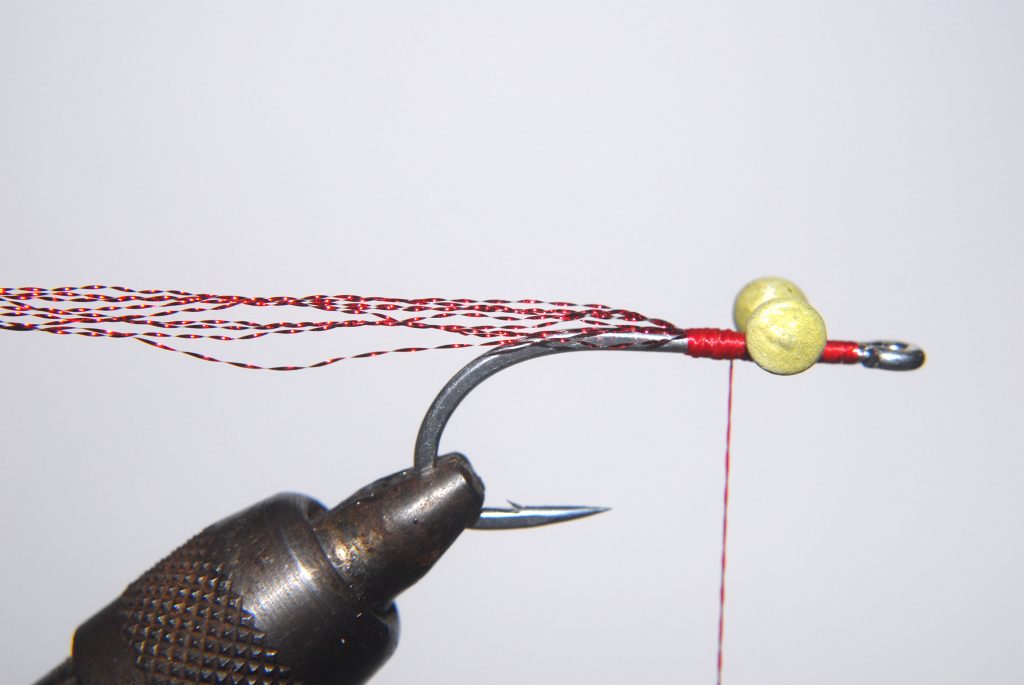
5
Cut a portion of the fluoro red bucktail with a tapered cut and tie in between the hook eye and dumbbell eye. Pass the bucktail over the gape in the eye and secure it to the hook shank just behind. Do lighter wraps as you proceed 5mm or so back to avoid the bucktail splaying out. Whip finish just behind the dumbbell eye.
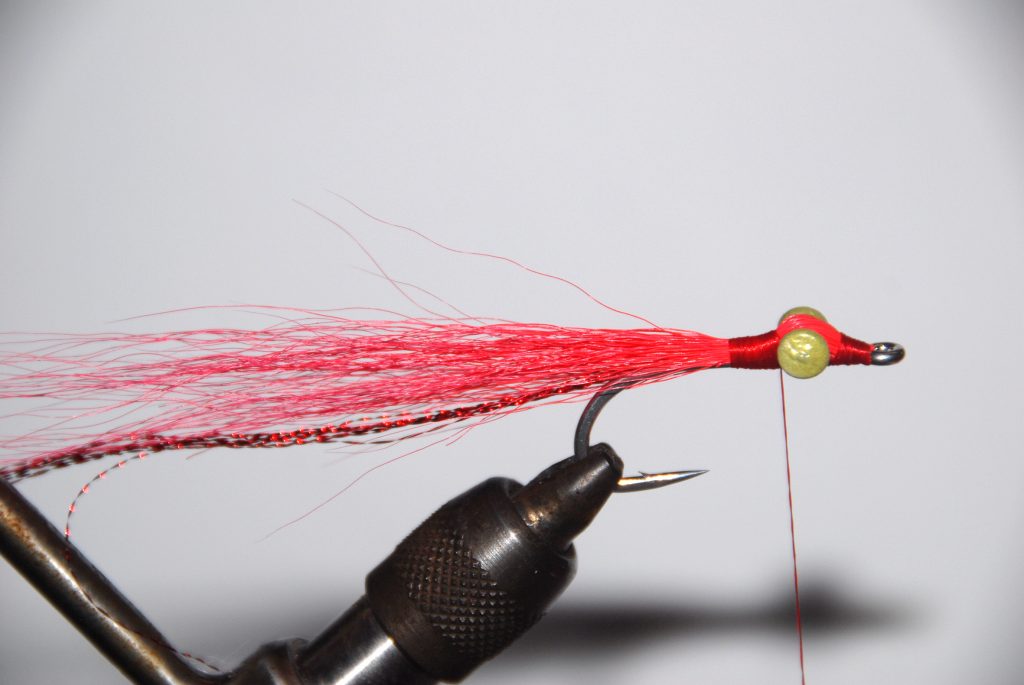
6
Turn the hook over and re-affix in the vice as shown. Pass the thread forward over the top and tie in 10 to 15 strands of the glow-in-the-dark sparkleflash just behind the hook eye with approximately the same number of strands passing down each side of the hook. The sparkleflash should be a fraction longer than the krystal flash.
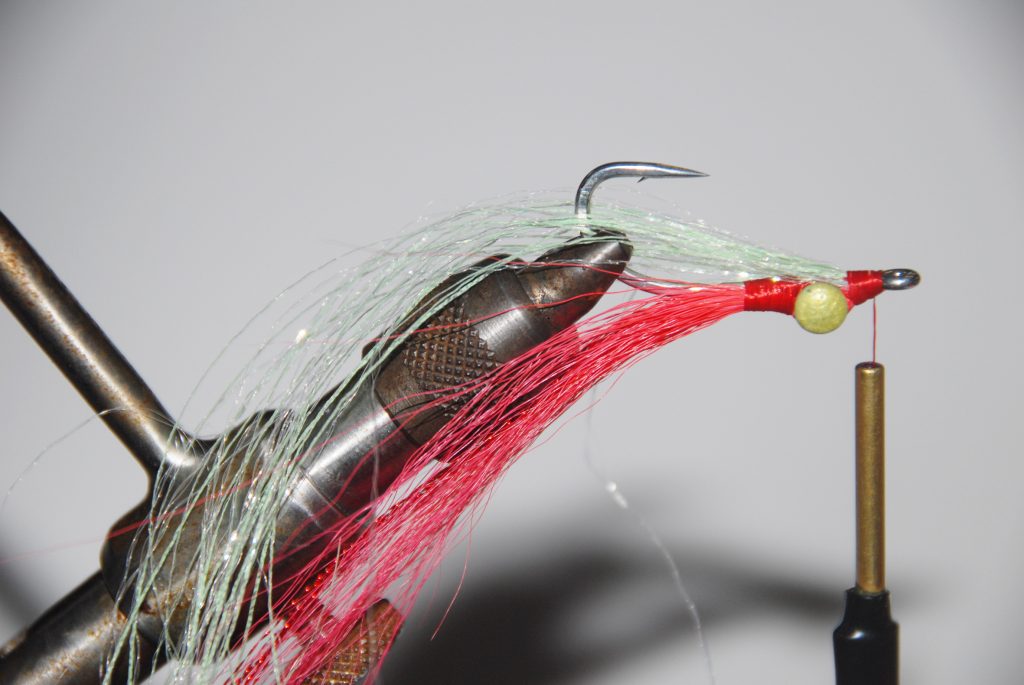
7
At this same position, tie in a decent portion of the green bucktail which is the same length or fractionally longer than the fluoro red. Taper the nose area to a cone shape and whip finish.
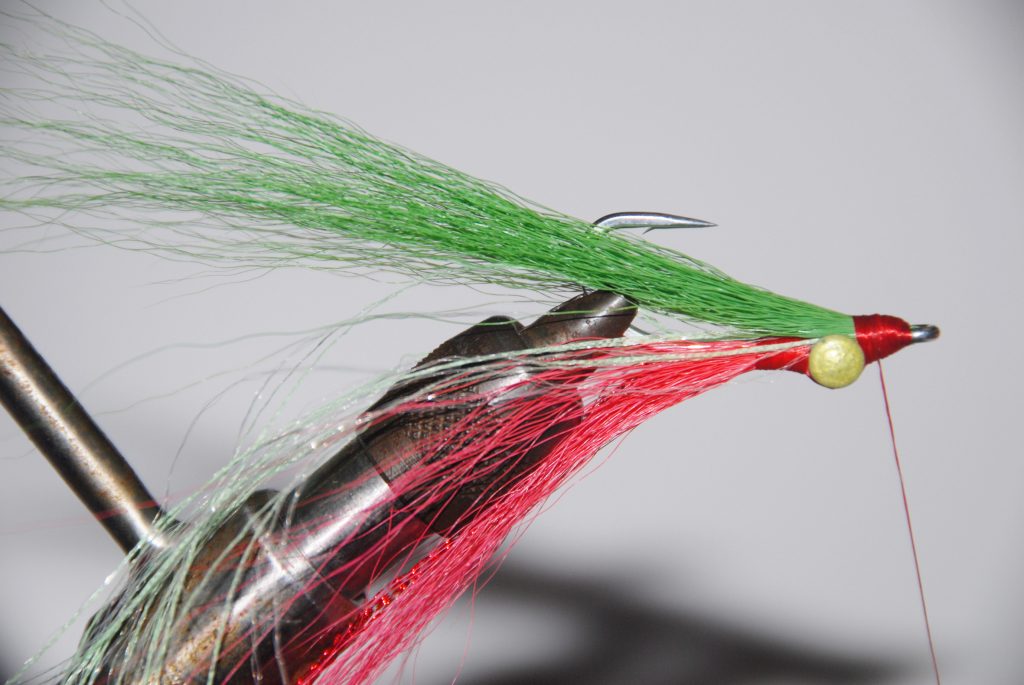
8
Once you have cut away the remaining thread, coat the entire thread area and the bucktail between the eyes with head cement. I like this water-based one as it is thin and penetrates well yet dries hard. Adding head cement will greatly increase the durability of the fly and if one strand of thread gets nicked by a tooth, the entire lot won’t unravel.
I will generally do two coats.
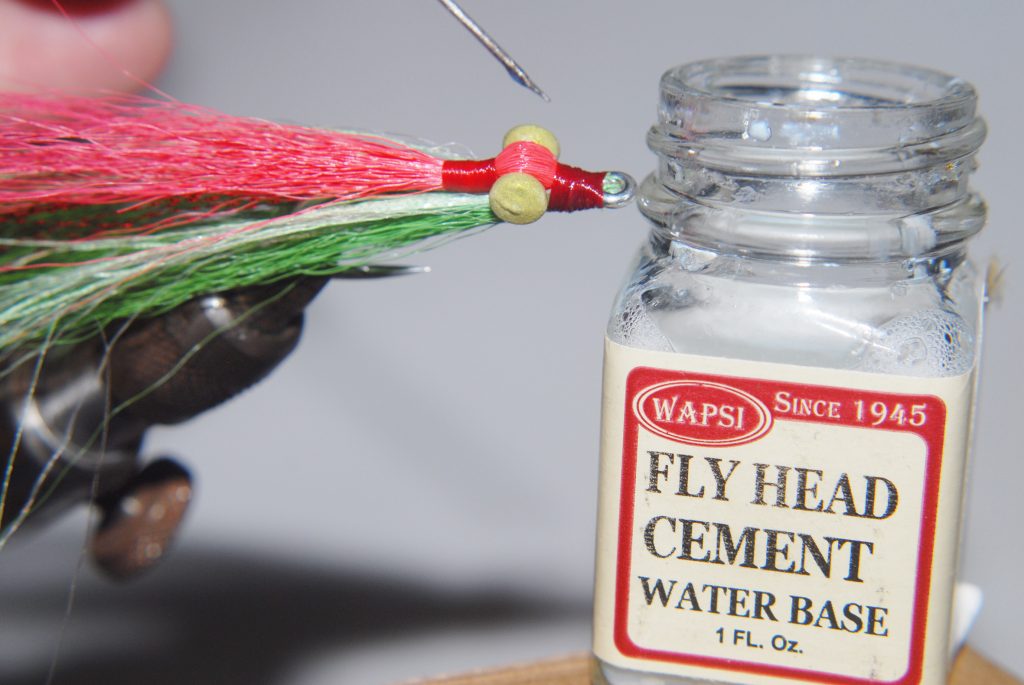
9
Once completed, the Nuked Chook Clouser is quite a good looking rooster, even under normal light. These bright colours really stand out in dirty water and the krystal flash adds some appeal due to reflecting light.
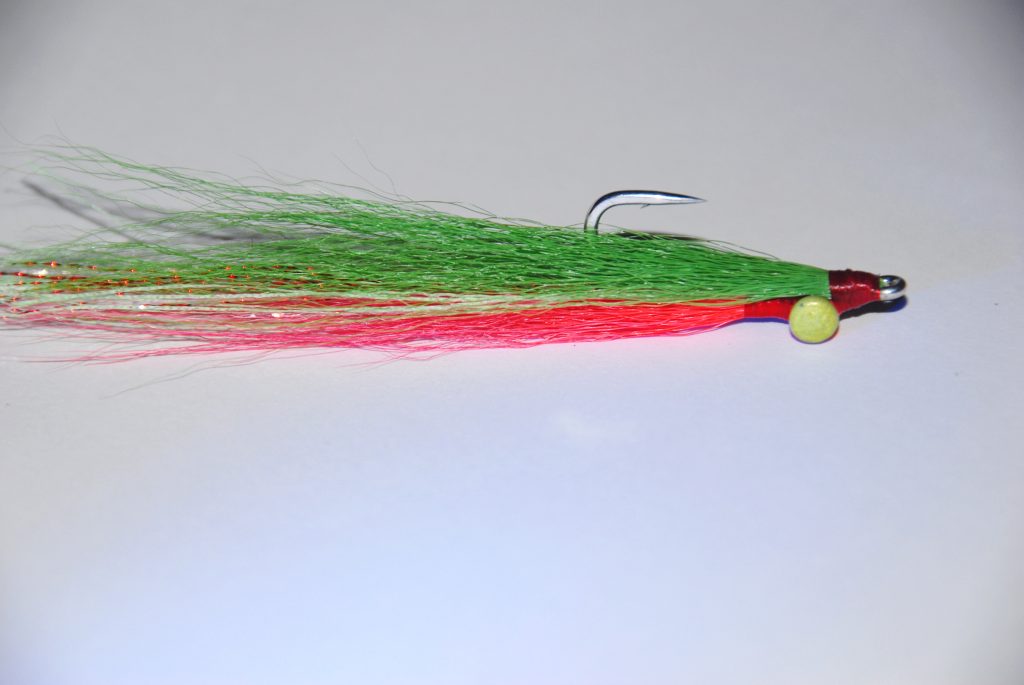
10
Under UV light there is greater contrast of the colours. The fluoro red bucktail really becomes obvious and both the glow eye and glow sparkleflsh are heroes of the pattern.
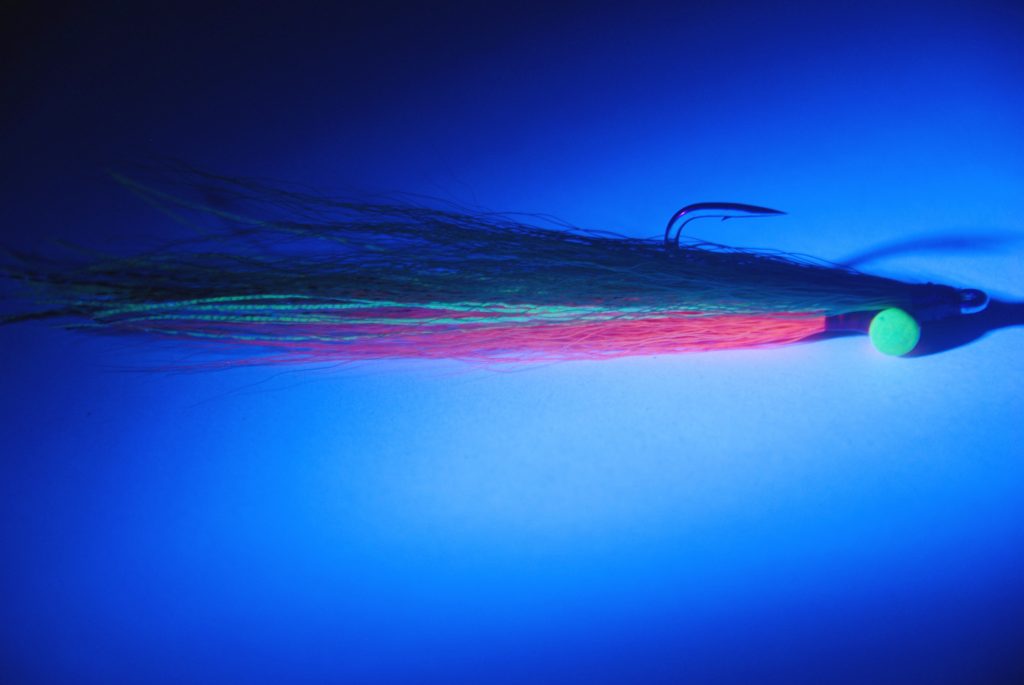
11
In the dark, the glow eye and glow sparkleflash are the most obvious attributes of the fly. In dirty water or depths where less light penetrates, this fly is still very obvious. In fact it is very obvious from the surface all the way down. The nuclear chicken colour is a hit in the soft plastic arena and now you have a fly with all the same appeal.
